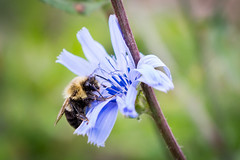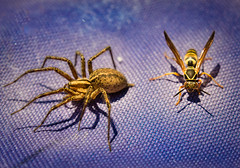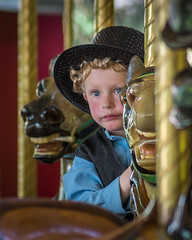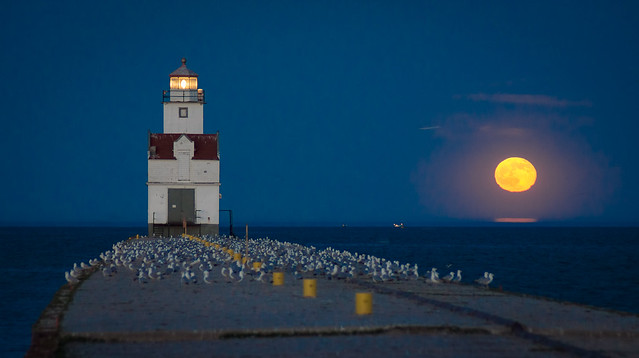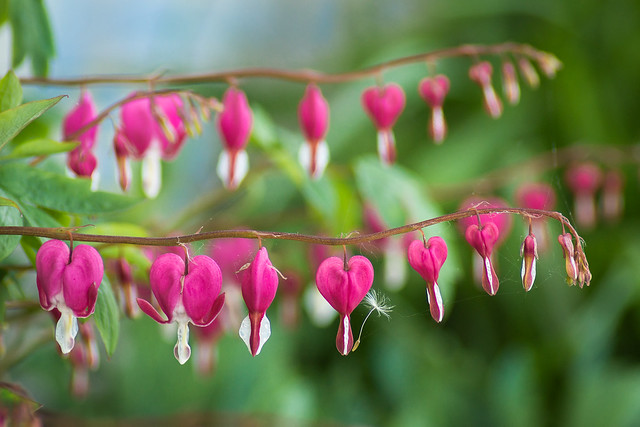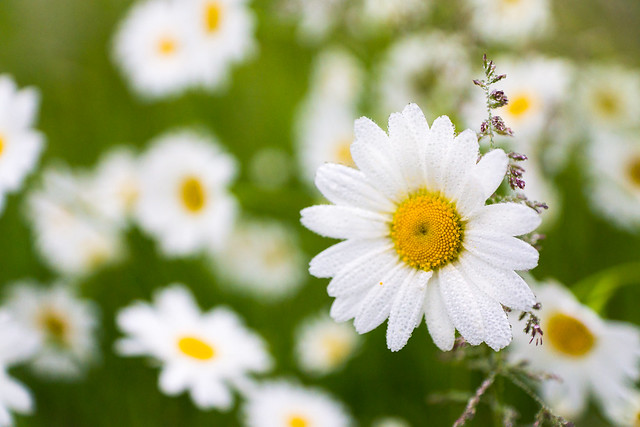Mayapples In the Rain

We call these plants Mayapples. (Also known by many other names, as you can see below.) I snapped this view on a hike thought the woods, during a very light rain.
In early spring, these lush green umbrella-like plants can fill patches of the forest floor.
Here’s some information available on Wikipedia…
Podophyllum peltatum, commonly called Mayapple, or May Apple, (or hogapple, Indian apple, mayflower, umbrella plant, wild lemon (flavor of the fruit), wild mandrake, American mandrake (shape of rhizomes) or “devil’s apple” (used for Solanum linnaeanum elsewhere)), is a herbaceous perennial plant in the Family Berberidaceae, native todeciduous forests in of eastern North America. Like many other spring ephemerals, it emerges from below ground before the canopy of the forest opens, and then slowly withers later in the summer; the foliage is, however, somewhat more long-lived than other spring emphemerals such as Trillium.
To view a larger version of this photo, simply click on it.
Cobblestone Cul-de-sac
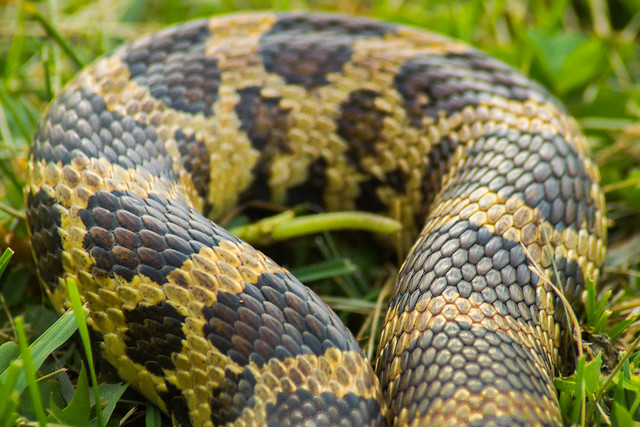
This is quite a departure from the typical sunrise or flower photos I often post. It’s all about interesting color and pattern combinations. You may not like snakes, but I hope you can appreciate the beauty in the scales on this snake’s skin. It reminded me of cobblestone.
This is the curve of a Western Fox Snake that stopped by for a visit recently. To view another image of this snake, see my previous post: Forked Tongue
To view a larger, more detailed version of the image above, simply click on it.
Lighting Up the Night
Liberal Supply of Bleeding Hearts
All You Can Eat Bluebird Buffet
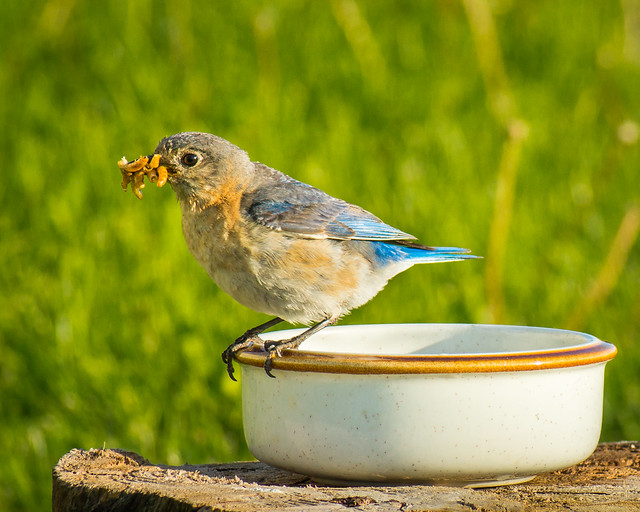
A mother’s work is never done. This female bluebird laid the eggs, sat on them until they hatched, spent all day, every day foraging for food for a brood of six. A week ago, they were big enough to leave the nest. Still, this dedicated mama gathers as much food as she can carry to her young waiting safely in a nearby tree.
We offer the bluebirds meal worm in this ceramic dish. It’s our small way of helping a working mother.
About a week ago, I posted a photo of the baby bluebirds before they left the nest. You can them here: Overflow Seating
To view a better, larger version of this image, simply click on the photo.
Morning Whispers

The moment has arrived…the sun is just breaching the horizon and another day begins, full of promise and opportunity, whispering encouragement.
This incredible morning is brought to you the lighthouse and pier at Kewaunee, WI and the cooperation of Lake Michigan.
To view a larger version, click on the photo.
Forked Tongue
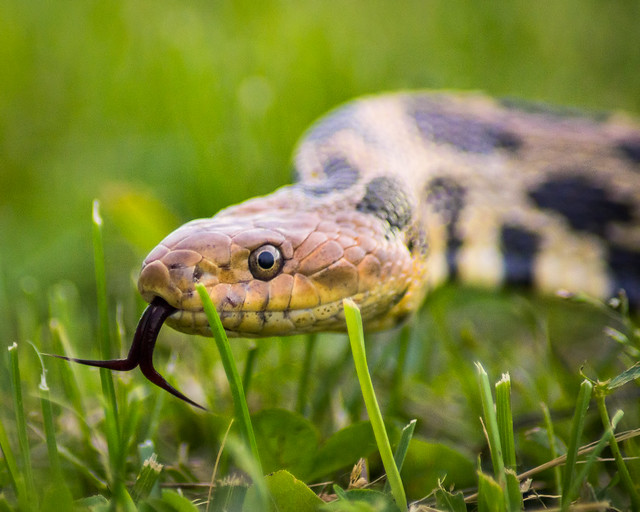 I’m not a ophiologist, but I believe this is a Western Fox Snake – also commonly called a Pine Snake. This formidable looking serpent, measuring a bit longer than 4 feet, was spotted gliding across our lawn. My camera’s fast shutter speed stopped that quickly flicking tongue. My apologies to those who are creeped out by snakes.
I’m not a ophiologist, but I believe this is a Western Fox Snake – also commonly called a Pine Snake. This formidable looking serpent, measuring a bit longer than 4 feet, was spotted gliding across our lawn. My camera’s fast shutter speed stopped that quickly flicking tongue. My apologies to those who are creeped out by snakes.
Here’s a bit of info about this type of snake from a Wisconsin DNR publication…
Family: Colubridae Size: 36-56 in. Status: Common
The fox snake has many large reddish-brown, chocolate brown, or black mid-dorsal blotches along its back and other smaller blotches on its sides on a background color of yellow, tan or olive gray. The head of adults is usually a dark copper, rust or orange color. They live in a variety of open habitats including marshes, sedge meadows, prairies and old fields. Their diet consists primarily of rodents and ground-nesting birds. Young fox snakes will occasionally eat amphibians. This species is the most frequently encountered snake in people’s homes, especially if the house has an old rock foundation where the snake(s) may be hunting for food or hibernating in the basement. The fox snake is often mistaken for the venomous copperhead snake due to its head color, and subsequently is often killed. Copperheads do not live in or near Wisconsin. Fox snakes are also often mistaken for rattlesnakes, as they often ‘rattle” their tails in dry leaves, grasses or against objects when disturbed.
To view more of the detail, click on the image and a larger version will open in a new browser tab.
Thriving Mist Daisy
Singing for Supper
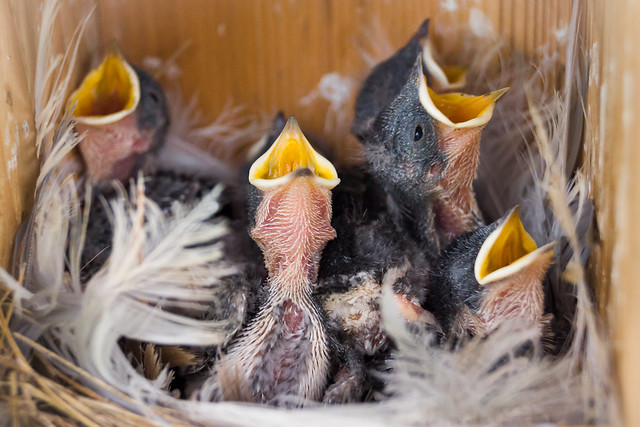
These young tree swallows are hungry and waiting for mom to serve up lunch. They are only about a week old, but growing fast. There are six in this nest box; one of several around our property.
Normally, when you open the nest box to look in our their progress, these young birds are very calm and sleep-like. I trick them to stretch and open their mouths my faking them out with a little whistle. When the mom returns with food, her motherly chirp will perk them up and they open up for the meal she’s brought. So, all it takes it is a little chirp of a whistle and they all bob up, mouths open, waiting. Don’t worry, they don’t stay hungry and wanting for long. Within in moments after close up the house, the parents are flying back in and out with food for them.
To get a better view, click on the photo and a larger version will open in a new browser window.







